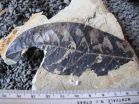(Press-News.org) Vegetation plays an unexpectedly large role in cleansing the atmosphere, a new study finds.
The research, led by scientists at the National Center for Atmospheric Research (NCAR) in Boulder, Colo., uses observations, gene expression studies, and computer modeling to show that deciduous plants absorb about a third more of a common class of air-polluting chemicals than previously thought.
The new study, results of which are being published this week in Science Express, was conducted with co-authors from the University of Northern Colorado and the University of Arizona. It was supported in part by the National Science Foundation (NSF), NCAR's sponsor.
"Plants clean our air to a greater extent than we had realized," says NCAR scientist Thomas Karl, the lead author. "They actively consume certain types of air pollution."
The research team focused on a class of chemicals known as oxygenated volatile organic compounds (oVOCs), which can have long-term impacts on the environment and human health.
"The team has made significant progress in understanding the complex interactions between plants and the atmosphere," says Anne-Marie Schmoltner of NSF's Division of Atmospheric and Geospace Sciences, which funded the research.
The compounds form in abundance in the atmosphere from hydrocarbons and other chemicals that are emitted from both natural sources--including plants--and sources related to human activities, including vehicles and construction materials.
The compounds help shape atmospheric chemistry and influence climate.
Eventually, some oVOCs evolve into tiny airborne particles, known as aerosols, that have important effects on both clouds and human health.
By measuring oVOC levels in a number of ecosystems in the United States and other countries, the researchers determined that deciduous plants appear to be taking up the compounds at an unexpectedly fast rate--as much as four times more rapidly than previously thought.
The uptake was especially rapid in dense forests and most evident near the tops of forest canopies, which accounted for as much as 97 percent of the oVOC uptake that was observed.
Karl and his colleagues then tackled a follow-up question: How do plants absorb such large quantities of these chemicals?
The scientists moved their research into their laboratories and focused on poplar trees. The species offered a significant advantage in that its genome has been sequenced.
The team found that when the study trees were under stress, either because of a physical wound or because of exposure to an irritant such as ozone pollution, they began sharply increasing their uptake of oVOCs.
At the same time, changes took place in expression levels of certain genes that indicated heightened metabolic activity in the poplars.
The uptake of oVOCs, the scientists concluded, appeared to be part of a larger metabolic cycle.
Plants can produce chemicals to protect themselves from irritants and repel invaders such as insects, much as a human body may increase its production of white blood cells in reaction to an infection.
But these chemicals, if produced in enough quantity, can become toxic to the plant itself.
In order to metabolize these chemicals, the plants start increasing the levels of enzymes that transform the chemicals into less toxic substances.
At the same time, as it turns out, the plant draws down more oVOCs, which can be metabolized by the enzymes.
"Our results show that plants can actually adjust their metabolism and increase their uptake of atmospheric chemicals as a response to various types of stress," says Chhandak Basu of the University of Northern Colorado, a co-author.
"This complex metabolic process within plants has the side effect of cleansing our atmosphere."
Once they understood the extent to which plants absorb oVOCs, the research team fed the information into a computer model that simulates chemicals in the atmosphere worldwide.
The results indicated that, on a global level, plants are taking in 36 percent more oVOCs than had previously been accounted for in studies of atmospheric chemistry.
Additionally, since plants are directly removing the oVOCs, fewer of the compounds are evolving into aerosols.
"This really transforms our understanding of some fundamental processes taking place in our atmosphere," Karl says.
INFORMATION:
Plants play larger role than thought in cleaning up air pollution
Chemicals known as oxygenated volatile organic compounds (oVOCs) affect environment, human health
2010-10-22
ELSE PRESS RELEASES FROM THIS DATE:
Parent-only treatment may be equally effective for children who are obese
2010-10-22
A study led by a researcher at the University of California, San Diego School of Medicine indicates that parent-only treatments for childhood obesity work equally as well as plans that include parents and child, while at the same time more cost effective and potentially easier for families.
The results were published today in the advanced online edition of the journal Obesity.
Kerri N. Boutelle, PhD, associate professor of pediatrics and psychiatry at UC San Diego and Rady Children's Hospital, San Diego, and colleagues set out to assess whether parent-only groups are ...
Scientists examine energy trends of communications equipment
2010-10-22
WASHINGTON, Oct. 21 – A team of scientists at Alcatel-Lucent Bell Labs have examined the energy consumption trends of communications equipment in use today and determined that gains in energy efficiency are not keeping pace with traffic growth. One consequence is that energy is going to become an increasingly important problem for communication networks.
In one unabated, business-as-usual scenario, the scientists estimate that power consumed per user could increase by seven-fold over the next 10 years. Based on these findings, Bell Labs has developed several technology ...
Entire issue of scientific journal devoted to center headed by Scripps Research Scientists
2010-10-22
LA JOLLA, CA, October 21, 2010 — A multi-institutional consortium led by The Scripps Research Institute scientists, the Joint Center for Structural Genomics (JCSG), is the sole focus of a special issue of the journal Acta Crystallographica Section F. This is the first time in the history of the monthly journal, which publishes peer-reviewed crystallography and structural biology articles, that an entire issue is devoted to the works of a single scientific center.
The issue contains 35 articles grouped into sections that highlight different aspects of the JCSG high-throughput ...
Population report: More Jews live in the US than in Israel
2010-10-22
CORAL GABLES, FL (October 21, 2010)--Researchers from the University of Miami (UM) and the University of Connecticut (UConn) have published a 2010 report on the American Jewish population, as part of a new North American Jewish Data Bank Report series.
The new report called Jewish Population in the United States-2010 shows a greater number of Jews in the U.S. than in Israel. While the article puts the total number of Jews in the U.S. at around 6.5 million, the authors recognize there may be some double counting in the methodology and believe the number to be fewer than ...
Evidence is weak for tropical rainforest 65 million years ago in Africa's low-latitudes
2010-10-22
The landscape of Central Africa 65 million years ago was a low-elevation tropical belt, but the jury is still out on whether the region's mammals browsed and hunted beneath the canopy of a lush rainforest.
The scientific evidence for a tropical rainforest at that time is weak and far from convincing, says paleobotanist Bonnie F. Jacobs at Southern Methodist University in Dallas.
Fossil pollen from Central and West Africa provide no definitive evidence for communities of rainforest trees at the beginning of the Cenozoic, says Jacobs, an expert in the paleobotany of Africa ...
Modeling study identifies characteristics of high elk-use areas in western Oregon, Washington
2010-10-22
The availability of highly nutritious forage is one of four factors linked to the presence of elk populations in western Oregon and Washington, according to a modeling study recently completed by scientists from the U.S. Forest Service's Pacific Northwest (PNW) Research Station. Findings from the two-year study will be used to update land management planning for the ecologically and economically important ungulate in the region.
"Habitat models like the one we developed are critical to managing elk populations, particularly since current management practices are based ...
Isotope near 'doubly magic' tin-100 flouts conventional wisdom
2010-10-22
OAK RIDGE, Tenn., Oct. 21, 2010 -- Tin may seem like the most unassuming of elements, but experiments performed at the Department of Energy's Oak Ridge National Laboratory are yielding surprising properties in extremely short-lived isotopes near tin-100's "doubly magic" nucleus.
Experiments performed with the exotic nucleus tin-101, which has a single neutron orbiting tin-100's closed shell of 50 protons and 50 neutrons, indicate an unexpected reversal in the ordering of lowest states in the nucleus. The finding appears to violate a standard scenario offered by the nuclear ...
Cholesterol-lowering drug shrinks enlarged prostates in hamster model
2010-10-22
Boston, Mass. - A cholesterol-lowering drug reduced the enlarged prostates of hamsters to the same extent as a drug commonly used to treat benign prostatic hyperplasia (BPH), report researchers at Children's Hospital Boston and their colleagues in the October issue of the Journal of Urology. Together, the drugs worked even better.
"We don't know the mechanism, but the results suggest to us that lowering cholesterol has the potential to reduce BPH in men," says senior author Keith Solomon, PhD, a biochemist, and member of the departments of Orthopaedic Surgery and Urology ...
Electron billiards in nanoscale circuits
2010-10-22
At the heart of the method is a so-called quantum point contact (QPC). This is a narrow conductive channel in a semiconductor circuit. The scientists created a 70-nanometer narrow channel, about as wide as the wavelength of electrons in the semiconductor. The key is that only one electron at a time will fit through the channel, making possible extremely high-precision measurements of the electric current. As described in the current publication, this method was applied to photogenerated electrons for the first time ever.
In the experimental set-up it is not the sun, but ...
Putting a bull's-eye on the flu: Paper details influenza's structure for future drug targeting
2010-10-22
Beating the flu has always been tough, but it has gotten even more difficult in recent years. Two of the four antiviral drugs used to treat a nasty case of the influenza A virus no longer work.
Fortunately, scientists at the National High Magnetic Field Laboratory and Institute of Molecular Biophysics at Florida State University and researchers at Brigham Young University in Utah are close to understanding why these drugs have become less effective — and how new drugs might take their place. Their findings appear this week in the journal Science.
"Resistance to drugs ...
LAST 30 PRESS RELEASES:
Numbers in our sights affect how we perceive space
SIMJ announces global collaborative book project in commemoration of its 75th anniversary
Air pollution exposure and birth weight
Obstructive sleep apnea risk and mental health conditions among older adults
How talking slows eye movements behind the wheel
The Ceramic Society of Japan’s Oxoate Ceramics Research Association launches new international book project
Heart-brain connection: international study reveals the role of the vagus nerve in keeping the heart young
Researchers identify Rb1 as a predictive biomarker for a new therapeutic strategy in some breast cancers
Survey reveals ethical gaps slowing AI adoption in pediatric surgery
Stimulant ADHD medications work differently than thought
AI overestimates how smart people are, according to HSE economists
HSE researchers create genome-wide map of quadruplexes
Scientists boost cell "powerhouses" to burn more calories
Automatic label checking: The missing step in making reliable medical AI
Low daily alcohol intake linked to 50% heightened mouth cancer risk in India
American Meteorological Society announces Rick Spinrad as 2026 President-Elect
Biomass-based carbon capture spotlighted in newly released global climate webinar recording
Illuminating invisible nano pollutants: advanced bioimaging tracks the full journey of emerging nanoscale contaminants in living systems
How does age affect recovery from spinal cord injury?
Novel AI tool offers prognosis for patients with head and neck cancer
Fathers’ microplastic exposure tied to their children’s metabolic problems
Research validates laboratory model for studying high-grade serous ovarian cancer
SIR 2026 delivers transformative breakthroughs in minimally invasive medicine to improve patient care
Stem Cell Reports most downloaded papers of 2025 highlight the breadth and impact of stem cell research
Oxford-led study estimates NHS spends around 3% of its primary and secondary care budget on the health impacts of heat and cold in England
A researcher’s long quest leads to a smart composite breakthrough
Urban wild bees act as “microbial sensors” of city health.
New study finds where you live affects recovery after a hip fracture
Forecasting the impact of fully automated vehicle adoption on US road traffic injuries
Alcohol-related hospitalizations from 2016 to 2022
[Press-News.org] Plants play larger role than thought in cleaning up air pollutionChemicals known as oxygenated volatile organic compounds (oVOCs) affect environment, human health



